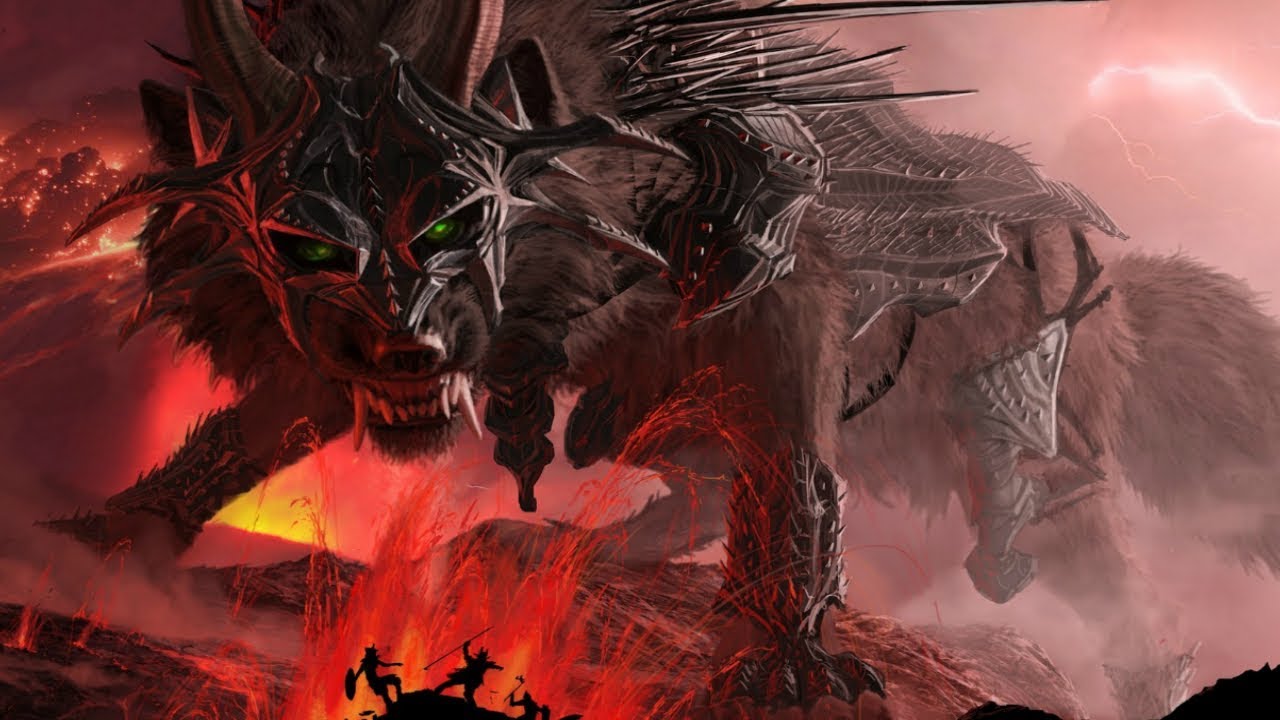Today we explore the captivating tale of Fenrir, the Lord of Wolves in Norse Mythology. Known for his misunderstood nature, Fenrir played a crucial role in the Ragnarok, the end of the world. In this video by Mythology & Fiction Explained, we delve into Fenrir’s lore, discussing his infamous strength and the attempts made by the gods to control him. Join us as we uncover the intriguing story of Fenrir and his quest for acceptance among his fellow gods. If you have a passion for mythology and folklore, consider subscribing to the channel to stay updated with the latest uploads and news.
Fenrir: The Lord of Wolves in Norse Mythology

Introduction
In the rich tapestry of Norse mythology, one character stands out as a fearsome and enigmatic force of nature. That character is Fenrir, often referred to as the Lord of Wolves. Representing chaos, destruction, and the untamed wild, Fenrir is a fascinating figure with a lineage shrouded in mystery. This article aims to delve into the origins, strength, imprisonment, and eventual role in the cataclysmic event known as Ragnarok.
Fenrir’s Origins and Lineage
According to Norse mythology, Fenrir is the son of Loki, the trickster god, and the giantess Angrboða. Born in the realm of the giants, Fenrir’s lineage gave him a close connection to both the gods and Jotnar, the powerful race of giants. This mixed heritage played a crucial role in shaping Fenrir’s destiny, as he inherited the immense strength of his father and the untamed nature of the Jotnar. As a result, Fenrir grew at an unprecedented rate, becoming a force to be reckoned with.
Fenrir’s Strength and Growth
From an early age, Fenrir displayed extraordinary strength that surpassed that of any other creature in the Norse realms. As he grew, so did his power, and his appetite for destruction became insatiable. Legends speak of Fenrir’s massive jaws, capable of devouring entire armies in a single bite. His size, comparable to mountains, struck fear into the hearts of gods and mortals alike. It is said that Fenrir’s strength grew to such an extent that even the mighty Odin, ruler of Asgard, became wary of his potential.
The Gods’ Fear of Fenrir
As Fenrir’s power continued to grow, the gods of Asgard became increasingly wary of his destructive potential. It was prophesied that Fenrir would play a pivotal role in the ultimate battle of Ragnarok, where the gods and giants would clash in a cataclysmic war. Recognizing the threat Fenrir posed, the gods sought to find a way to contain him and mitigate the devastation he could wreak upon their realms.
Fenrir’s Imprisonment
In their quest for a solution, the gods turned to the dwarves, skilled craftsmen known for their ability to create powerful artifacts. The dwarves forged a chain called Gleipnir, an unassuming-looking item that possessed remarkable qualities. However, the mighty Fenrir sensed the gods’ trepidation and grew suspicious of their intentions. He refused to be bound by any regular chain, aware that his strength could easily break through such feeble restraints.
The Unbreakable Chain
To convince Fenrir of Gleipnir’s strength, the gods played a game of wits. They challenged Fenrir to test the chain under the condition that they would release him if he could not break free. Intrigued by their proposal, Fenrir agreed. As the gods bound him with Gleipnir, the astonishing happened – the seemingly ordinary-looking chain held firm against Fenrir’s tremendous strength. Realizing the gods had truly created an unbreakable chain, Fenrir’s distrust turned into anger, setting the stage for his demand for good faith.
Fenrir’s Demand for Good Faith
Feeling betrayed by the gods, Fenrir made a demand that they show their intentions were pure. He proposed that one of the gods place their hand in his mouth as a gesture of good faith. Many gods hesitated, fearing Fenrir’s jaws, but ultimately, Tyr, the god of war, agreed to the perilous act. With Tyr’s hand firmly in his mouth, Fenrir allowed the gods to secure him with Gleipnir, fully aware of their commitment.
Fenrir’s Containment and Revenge
Bound by Gleipnir, Fenrir’s power was finally contained. His immense strength paralyzed, he unleashed a furious rage upon realizing the gods’ true intentions. Seething with anger, Fenrir vowed revenge upon the gods and all creation. The gods, aware of Fenrir’s furious state and his role in Ragnarok, understood the gravity of the situation and prepared for the inevitable clash.
Fenrir’s Role in Ragnarok
In Norse mythology, Ragnarok stands as the ultimate cataclysmic event, signaling the end of the current world and the beginning of a new one. Fenrir’s destiny was entwined with this apocalyptic event, as it was foretold that he would play a pivotal role in the final battle. Breaking free from his chains, Fenrir would join forces with the giants, wreaking havoc upon the realms and engaging in a fierce combat against the gods. This climactic battle would see many of the old gods fall, including Odin himself, as Fenrir’s fury unleashed devastation upon the world.
Conclusion
Fenrir, the Lord of Wolves in Norse mythology, can be seen as a symbol of unbridled chaos and untamed destiny. Born of mixed heritage, his immense strength and rapid growth posed a significant threat to the gods and their realms. Through cunning and the creation of the unbreakable chain Gleipnir, the gods managed to contain Fenrir and delay the fulfillment of his destructive destiny. However, ultimately, his role in Ragnarok would bring about the downfall of gods and giants alike, leaving the world forever changed. Fenrir’s tale serves as a reminder that even the most formidable forces can be restrained, but in the end, all things succumb to the cycle of creation and destruction.
